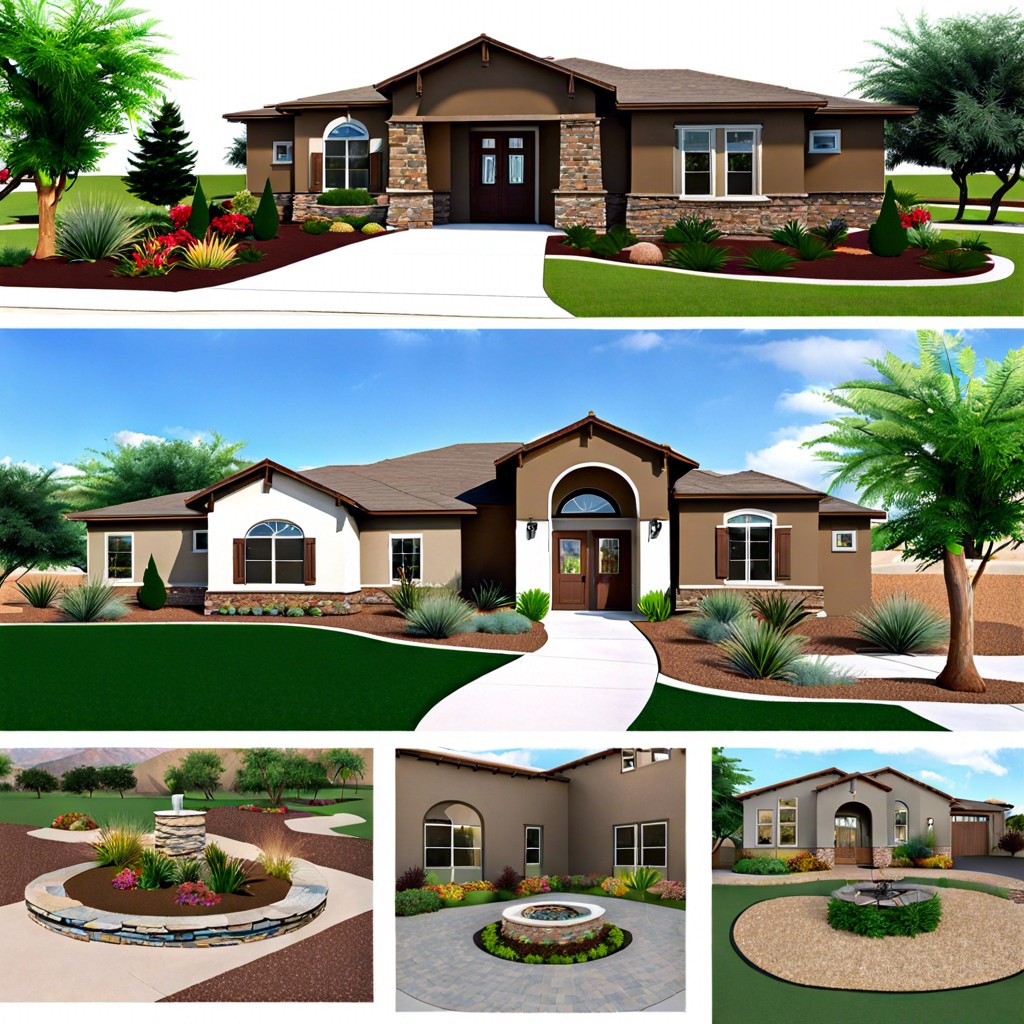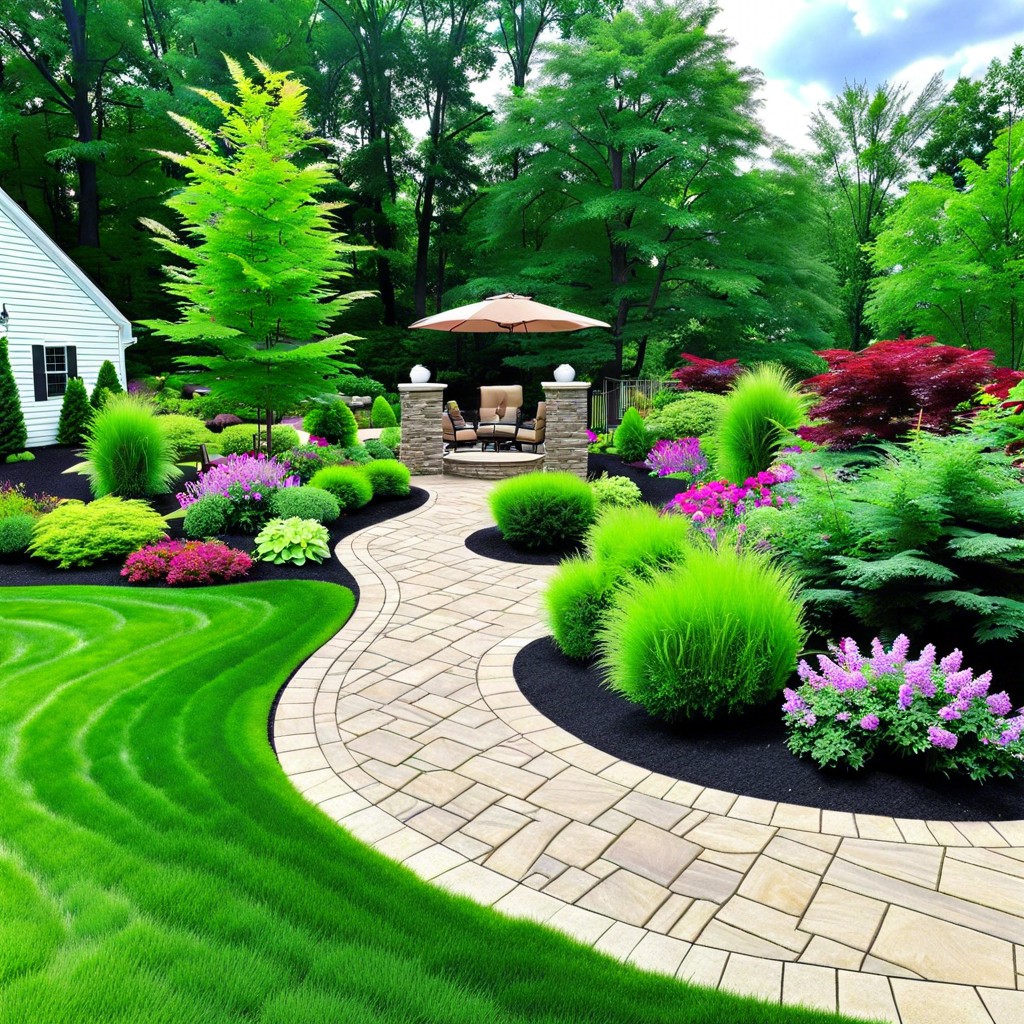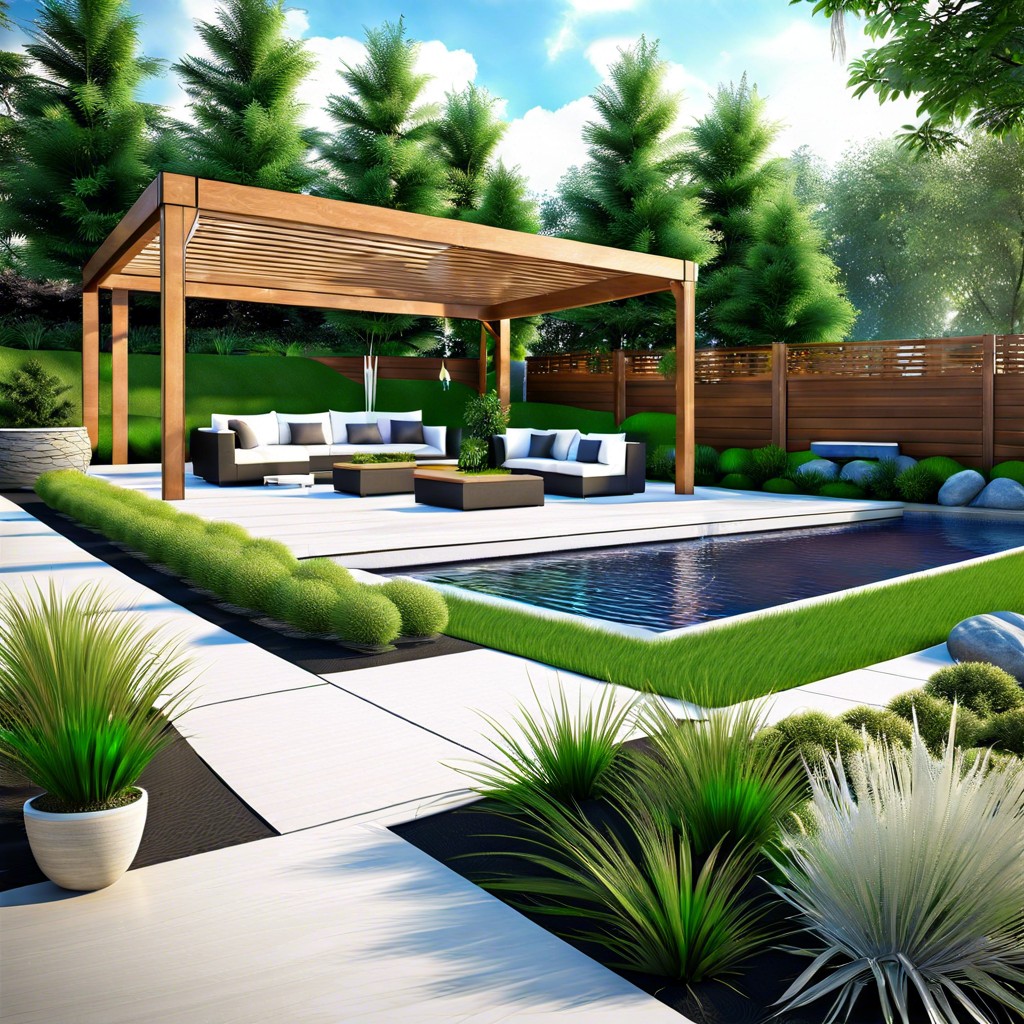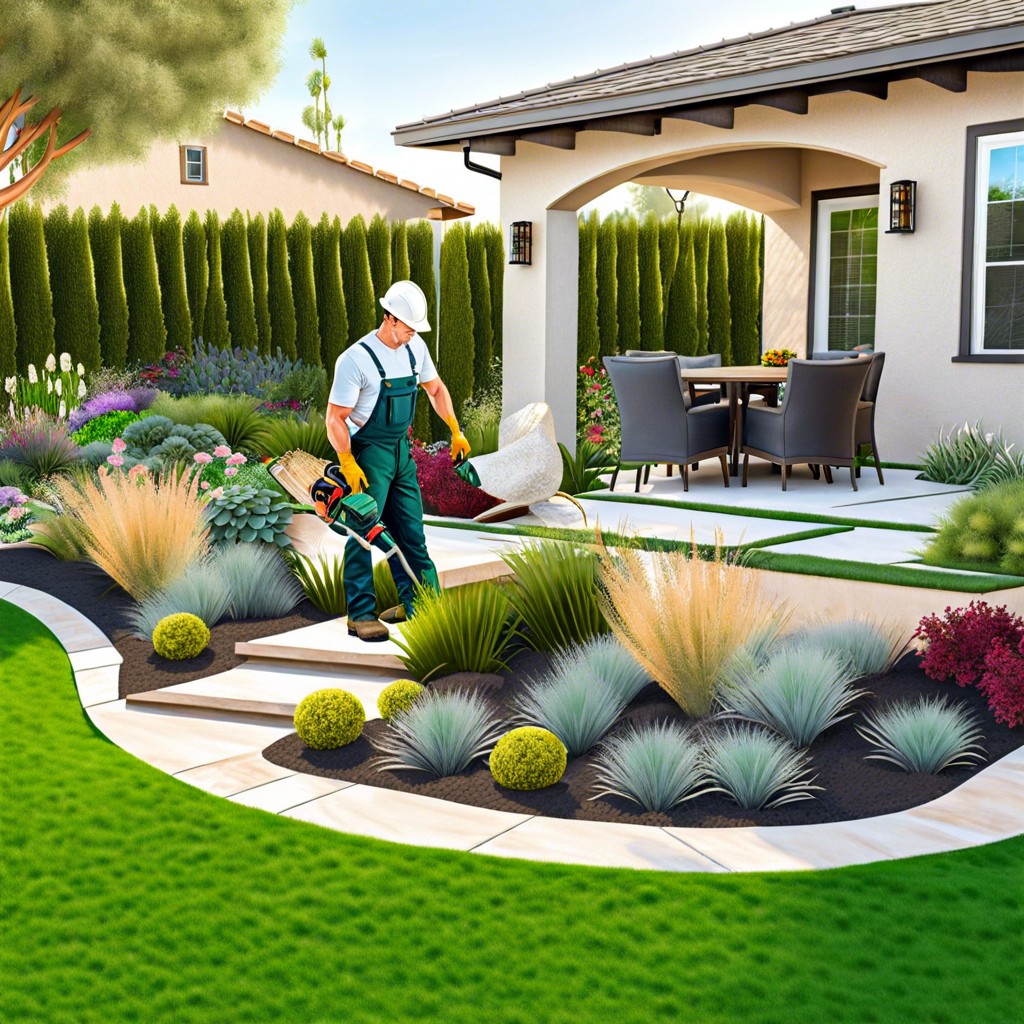Discover the variety of commercial landscaping services available to enhance the aesthetic appeal and functionality of your business property, from design and maintenance to tree care and irrigation systems.
Key takeaways:
- Commercial landscaping services: design, installation, hardscaping, maintenance, irrigation systems
- Benefits of professional landscaping: first impressions, property value, environmental benefits, employee well-being, energy efficiency
- Seasonal color and plant installation services: customized design plans, seasonal adaptation, professional installation, maintenance, transition planning
- Water management solutions: smart irrigation technology, drip irrigation, rainwater harvesting, native plant selection, mulching
- Sustainable landscaping practices: native plants, permeable paving, smart irrigation systems, green roofs and walls, solar-powered lighting
Types of Commercial Landscaping Services
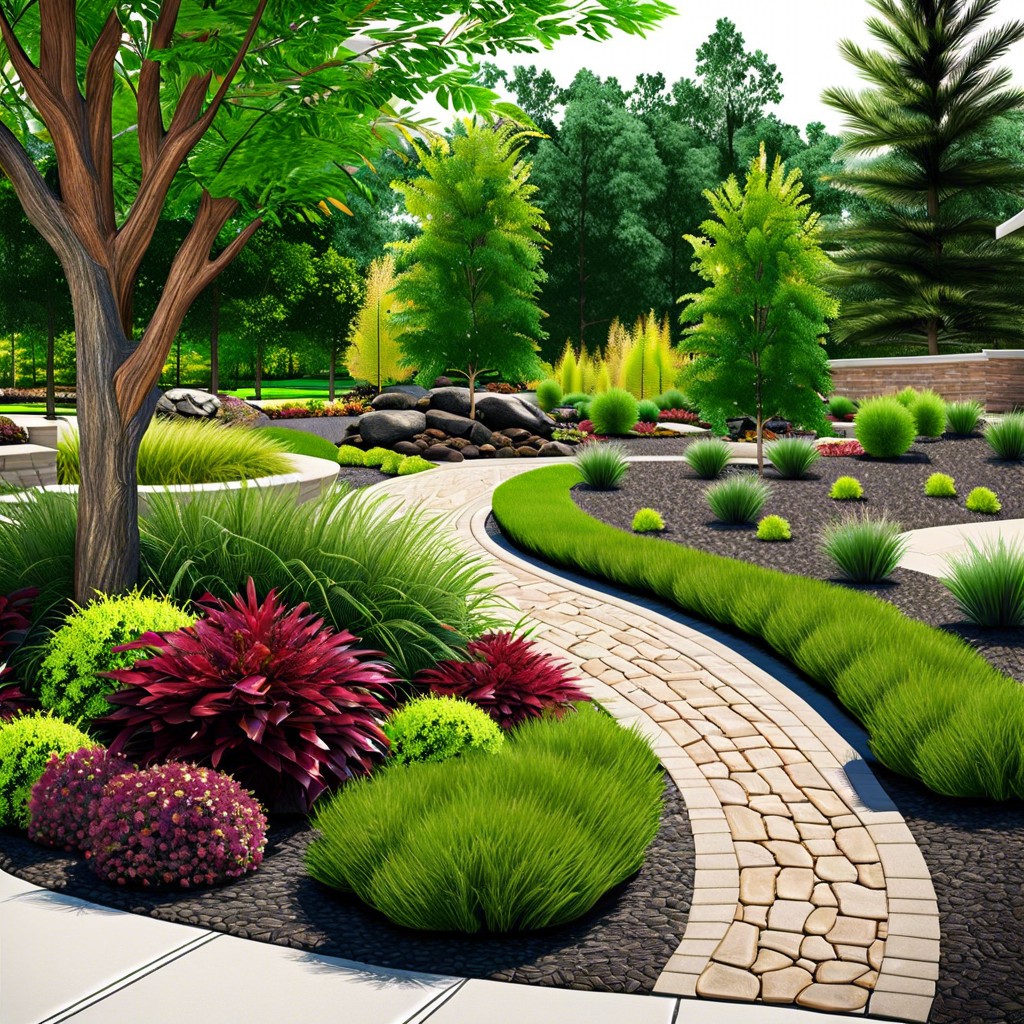
Commercial landscaping encompasses a wide range of services designed to enhance the aesthetic appeal and functionality of business exteriors. Among the core offerings:
1. Design and Planning: This foundational service involves creating a comprehensive plan that considers the business’s branding, the local climate, and the intended use of the outdoor space.
2. Landscape Installation: Once a design is in place, installation services bring the vision to life. This can include planting trees, shrubs, and flowers, as well as installing turf or artificial grass.
3. Hardscaping: Beyond plant life, hardscaping incorporates non-living elements like patios, walkways, retaining walls, and water features to add dimension and utility to the space.
4. Maintenance and Upkeep: Regular maintenance services are vital to preserving the landscape’s appearance and health, ranging from lawn mowing and pruning to pest control and fertilization.
5. Irrigation Systems: Proper watering is vital for plant health. Installations and maintenance of irrigation and sprinkler systems ensure efficient water use and healthier landscapes.
6. Lighting: Landscape lighting increases visibility for safety and extends the usability of outdoor spaces after dark while accentuating key design features.
7. Snow Removal and Winter Services: In colder climates, businesses require snow and ice management to keep their landscapes accessible and safe during winter months.
Offering these diverse services, commercial landscaping professionals aim to create welcoming and impressive environments for businesses, their clients, and their employees.
Benefits of Professional Commercial Landscaping
Investing in professional commercial landscaping services can provide a myriad of advantages for businesses:
1. First Impressions Matter: A well-maintained outdoor space creates a positive first impression for potential clients and customers, reflecting a company’s attention to detail and commitment to quality.
2. Increased Property Value: Landscaping can significantly increase the value of a property by enhancing its curb appeal, which in turn can attract more customers or tenants.
3. Environmental Benefits: Properly designed landscapes can help in reducing soil erosion, filtering pollutants, and providing a habitat for local wildlife, contributing to the overall health of the local ecosystem.
4. Enhanced Employee Well-being: Attractive and functional outdoor areas can serve as a peaceful retreat for employees during breaks, thereby reducing stress and boosting morale and productivity.
5. Energy Efficiency: Strategic placement of trees and shrubs can provide shade and wind protection, potentially lowering heating and cooling costs for the building.
6. Safety and Accessibility: Professional landscapers ensure pathways and outdoor spaces meet safety standards, reducing the risk of accidents and improving accessibility for all visitors.
By recognizing these benefits, businesses can see landscaping not merely as an aesthetic investment but also as a strategic one that can improve various aspects of their operations and workplace environment.
Seasonal Color and Plant Installation Services
Incorporating vibrant colors and varied textures into your commercial space can significantly enhance its visual appeal. This is where seasonal color and plant installation services come in, ensuring your landscape is always at its best regardless of the time of year.
Here’s an overview of what these services typically involve:
- Customized Design Plans: Landscaping experts work with you to create a design that reflects your brand and caters to the aesthetic you desire for your property.
- Seasonal Adaptation: Through the strategic selection of annual and perennial plants, your landscape is kept lively with flora that thrives in the changing conditions of each season.
- Professional Installation: Plants are carefully installed to maximize their health and longevity, also ensuring that the color palette complements the surrounding architecture.
- Maintenance Services: Regular upkeep is provided, including mulching, pruning, and fertilization, to maintain the vibrancy and health of the plants.
- Transition Planning: As the seasons change, your service provider plans and transitions the landscape elements to suit the upcoming weather and seasonal conditions without disruption to the property’s aesthetics or use.
By utilizing these services, you ensure your commercial property remains inviting and professional all year round, making a positive impression on customers and employees alike.
Water Management Solutions for Landscapes
Implementing effective water management in commercial landscapes is essential for ensuring the vitality of plants while conserving this precious resource. A critical component involves irrigation systems that are carefully designed to match the unique requirements of the vegetation and local climate.
1. Smart Irrigation Technology: Automated systems equipped with sensors can measure moisture levels in the soil, adjusting water delivery accordingly to prevent over or under-watering. This not only keeps plants healthy but also reduces water waste significantly.
2. Drip Irrigation: An efficient technique that delivers water directly to the roots of plants, minimizing evaporation and runoff. It’s particularly well-suited for flower beds and shrub areas.
3. Rainwater Harvesting: Collecting and storing rainwater allows for its use during drier periods, reducing dependence on municipal water systems and lowering water bills.
4. Native Plant Selection: Opting for native plant species is not only environmentally friendly but also advantageous for water management, as they are adapted to the local rainfall pattern and usually require less supplemental watering.
5. Mulching: A layer of mulch retains moisture in the soil, reduces water evaporation rates, and keeps the roots of plants cool.
6. Regular Maintenance Checks: Routine inspections and fine-tuning of irrigation equipment ensure there are no leaks or blockages thus preventing water loss.
By integrating these strategies, commercial landscaping can thrive while promoting water conservation, an increasingly significant concern in today’s environmentally-conscious business climate.
Sustainable Landscaping Practices for Businesses
Embracing sustainability in commercial landscaping isn’t just about enhancing aesthetic appeal; it’s a commitment to environmental stewardship. By integrating eco-friendly designs and practices, businesses can significantly reduce their ecological footprint while creating a welcoming outdoor space.
One method is the use of native plants which are adapted to local conditions. These plants require less water and maintenance, and they offer a supportive habitat for indigenous wildlife. Moreover, they can handle local pests and weather patterns better than non-native species, leading to less need for chemical interventions.
Incorporating permeable paving is another strategy. It reduces runoff by allowing rainwater to seep through surfaces and return to the water table, a process vital for preventing erosion and pollution in local waterways.
Moreover, smart irrigation systems can make a huge difference in water conservation. These systems are designed to provide optimal hydration based on the local climate, weather forecasts, and soil conditions. They deliver water where and when it’s needed, minimizing wastage.
Businesses can also install green roofs and walls which not only provide insulation but also help in reducing urban heat island effect. They act as natural air filters and increase biodiversity within urban environments.
Finally, businesses are turning to solar-powered landscape lighting as an alternative to traditional electrical options. This switch not only reduces energy costs but also minimizes the carbon footprint associated with lighting expansive outdoor areas.
By prioritizing these sustainable practices, businesses can play a pivotal role in preserving natural resources and fostering a greener future.
Also interesting:

